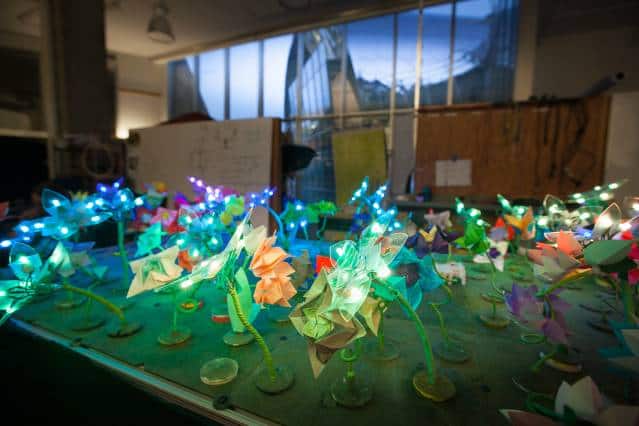MIT’s Stunning Robot Garden: A Review
Introduction
In an effort to make programming more appealing to children, MIT has developed a captivating “robot garden” featuring dozens of fast-changing LED lights and over 100 origami robots that can crawl, swim, and blossom like flowers. This innovative project aims to not only showcase the exciting results of robot programming but also demonstrate the principles of distributed computing. Let’s delve into the details of this fascinating creation.
The Creation of the Robot Garden
The team behind the robot garden hails from MIT’s Computer Science and Artificial Intelligence Lab (CSAIL) and the Department of Mechanical Engineering. The garden boasts robotic sheep, origami flowers that can open and change colors, and, of course, robotic ducks. These robotic ducks are particularly intriguing as they can change their shape by being heated in an oven.
Software Operation and Experimentation
The software for controlling the robots is operated from a tablet and is detailed in a paper accepted to the 2015 International Conference on Robotics and Automation. The project serves as a platform for testing distributed algorithms with over 100 distinct robots, allowing for large-scale experimentation. CSAIL Director Daniela Rus emphasizes the educational value of the project, introducing students to concepts like graph theory and networking in a visually engaging manner.
Interactive Features and Educational Benefits
The software for the robots offers both a “control by click” feature, allowing users to interact with individual flowers, and a more advanced “control by code” feature where users can input their own commands. This hands-on approach enables students to see the direct impact of their coding efforts in a physical environment, bridging the gap between theory and practice. Lead author Lindsay Sanneman highlights the project as a valuable tool for schools to teach fundamental concepts of algorithms and programming.
Design and Fabrication Process
The design of the robot garden came together seamlessly, starting with eight distinct varieties of origami flowers and incorporating printable motors for movement. The sheep robots were created using traditional print-and-fold origami techniques, while the magnet-powered ducks were initially two-dimensional paper prints that transformed into three-dimensional shapes when heated in an oven. The team envisions that rapid fabrication techniques will continue to evolve, making projects like this accessible for standard classrooms.
Future Implications and Potential
The team at MIT believes that tools like the robot garden have the potential to spark interest in computer science among young learners by showcasing the real-world applications of programming. By exposing children to hands-on experiences with technology from an early age, tools like this can help bridge the gap between theoretical knowledge and practical skills. The team is optimistic about the impact of such projects in inspiring the next generation of programmers and innovators.
Conclusion
MIT’s robot garden is a testament to the creativity and ingenuity of the team at CSAIL and the Department of Mechanical Engineering. By combining art, technology, and education, this project serves as a captivating way to introduce students to the world of programming and distributed computing. As tools like the robot garden continue to evolve and become more accessible, the potential for inspiring future generations of tech enthusiasts is limitless. Thank you, MIT, for pushing the boundaries of innovation and education with this stunning creation.

